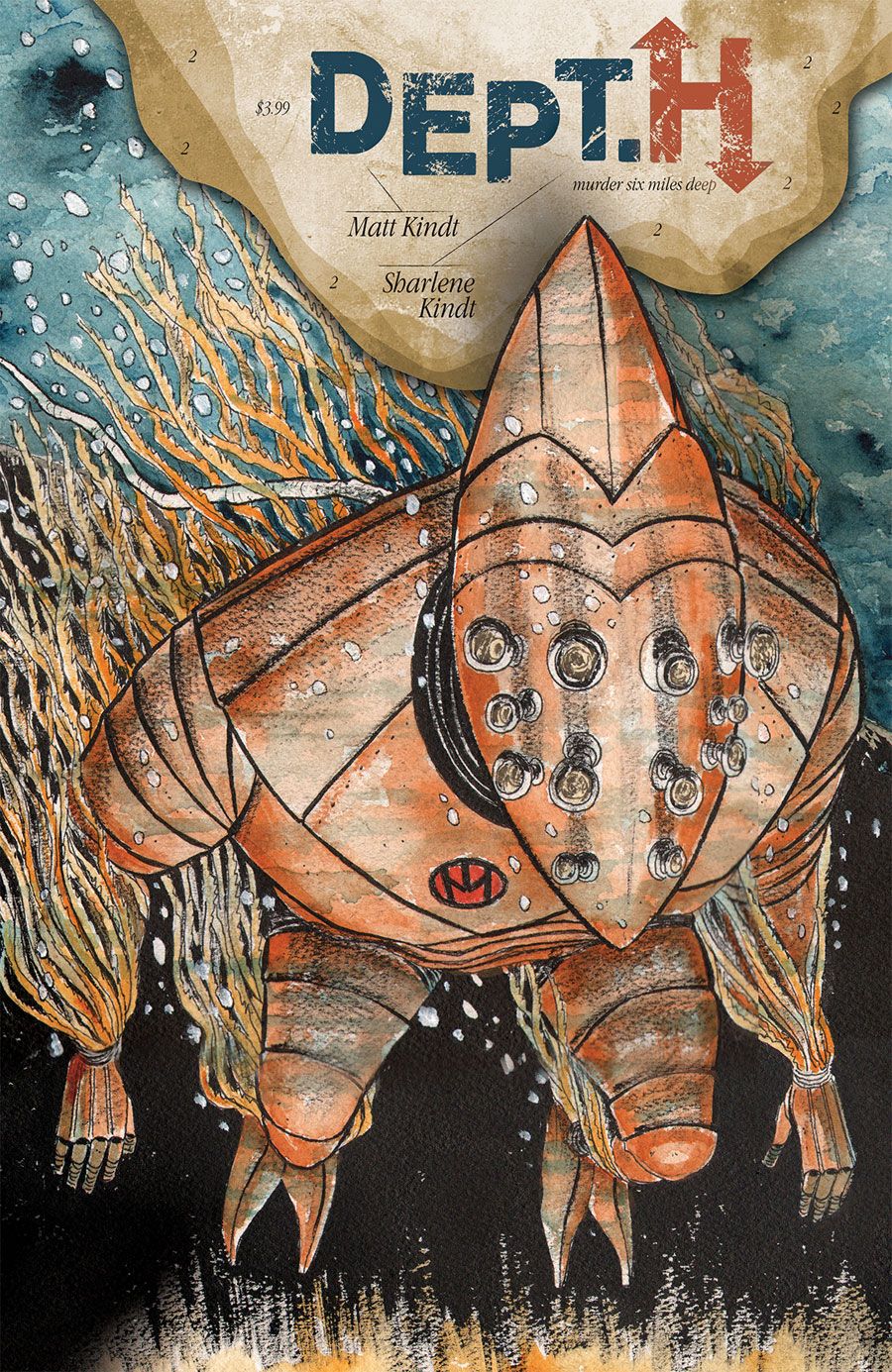In science, there remains two great unexplored frontiers: the depths of the ocean and the vastness of space. Matt Kindt uses that to his advantage in "Dept. H" #2, where the two settings are compared and contrasted, even as a murder investigation looms in the background.
Kindt's main character Mia is an intriguing one; blessed and cursed with a perfect memory, she's simultaneously a great person to investigate the death of her father on the ocean floor and the worst choice possible. She's a character who is clearly unable to let things go on account of never forgetting them; as a result, it's hard to tell if she's keeping her brother Raj as a suspect in her mind because she's just that good an investigator, or if it's because she still blames him for halting the space expedition both of them were on years earlier.
Kindt uses Mia's experiences in outer space to give us a strong side-by-side look at how that journey compares to being beneath seven miles of ocean. As Kindt notes, there's a huge amount of emptiness in space, while the ocean forever pushes on you from all sides. It's a clever comparison, even as the dangers feel very similar. So, when we see that the previous expedition ended on account of debris knocking out an antenna, it's hard to keep from shivering when "Dept. H" #2 quickly reveals that the underwater base's antenna has also just been disabled. Kindt builds the tension quickly, and the presence of danger grows by the second while Mia tries to deal with her mistrust of her brother, her haunting memories and the imminent danger around her. It's a perfect way to steadily raise the stakes building throughout the issue.
A lot of that mood comes from the artwork, both in the way Kindt makes the inside of the underwater station feel claustrophobic and how vast the ocean itself feels. When we first see Mia and the rest of the crew, they're crammed into a hallway with pipes, wires and bulkheads surrounding them. It's a great visual reminder of how space is a premium here, and how the close quarters will play a role in everyone's interactions; there's no getting away from anyone else for very long. The way Kindt draws technology is forever intriguing, especially in how well he makes certain items -- like the protective suits or the overall shape of the space station -- feel so bulky. It would be easy to make them look sleek and futuristic, but the way they're drawn as hulking constructions makes them look strong as well as realistic. This is the sort of thing we could very well have in our present day.
Sharlene Kindt's colors complement Matt Kindt's art, too. She uses an eerie shade of red for the flickering lights and interesting shades for the fish in the chasm leading to the cave, which makes them eye-catching and vivid, a great contrast to the darkness of the setting or the deep blues of the water before the descent. Who knew a comic book jellyfish could look so gorgeous? When the fish suddenly rush Mia and Raj, they stand out amidst the blackness of their surroundings in a way that makes the moment that much more urgent and dangerous.
"Dept. H" #2 has sold me on this new series even more than the first issue; now that we're seeing a bit more about the way the story will play out and what Mia's investigation looks like, I'm hooked. This is a series that promises to draw the reader in by making each issue its own little event, even as the pieces start to snap together in the larger puzzle. Matt Kindt and Sharlene Kindt can drag me into the depths of "Dept. H" every month; I'm ready and willing for the descent.

